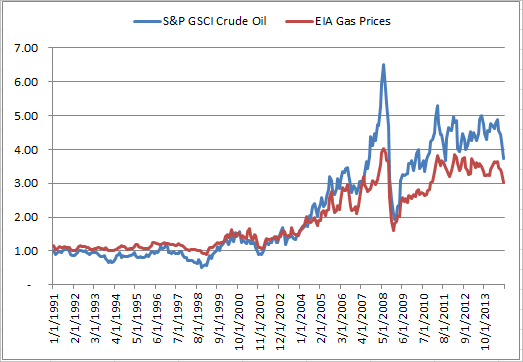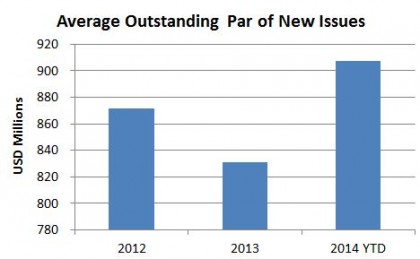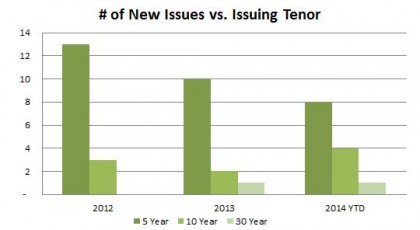The green credit market has grown 50% annually since 2007, however market sentiment remains mixed on performance. The S&P Green Bond Index is down 0.99% YTD, when most of the bond market has done quite well in 2014. Abundant growth in concert with poor performance could prompt the suggestion that investors are deriving utility from social responsibility in lieu of returns.
Abengoa Greenfield’s equity shares fell 18%, while the price of their 2021 notes fell from $96 to $83 Thursday, following market confusion about the recourse status of the Spanish clean energy firm’s “guaranteed” debt. Abengoa comprises 2.5% of the S&P Green Bond Index which fell 0.11% yesterday. This type of volatility is somewhat of an anomaly for the budding market, with the majority of the index being comprised of extremely high rated supranational debt. The S&P/BGCantor U.S. Treasury Bond Index is up 3.06% in 2014, surpassing its five year annualized return of 2.86%.
The S&P Green Project Bond Index is up 8.85% YTD however, outperforming the S&P Municipal Bond Index which is up 8.27% YTD. Green project bonds finance specific environmentally friendly projects, creating more risk and return in the current low rate environment. Green project bonds have also outpaced high yield corporates by nearly 95%, as the S&P U.S. Issued Corporate Bonds Index is up 4.56% YTD.

The green bond universe is still vastly made up of supranational organizations and performs accordingly, however as segments within the market continue to develop, green bonds are beginning to show their true colors.
The posts on this blog are opinions, not advice. Please read our Disclaimers.















































